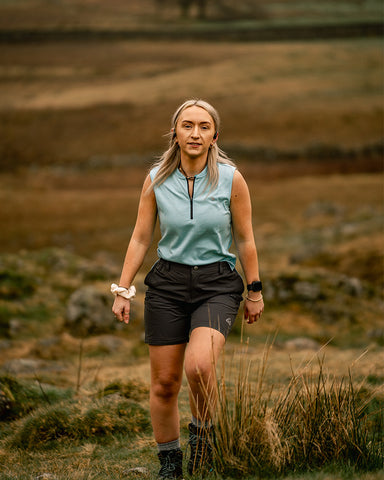Trail Running vs. City Running:
Trail running and city running are two different types of running activities with distinct differences in terrain, environment, and experience.

Terrain and Environment:
- Trail Running: Trail running typically takes place in natural environments such as mountains, forests, valleys, or rural roads. Runners navigate various terrains including uphill, downhill, trails, rocks, roots, and possibly changing weather conditions.
- City Running: City running occurs within urban or town environments, usually on city streets, sidewalks, or parks. The terrain is typically flat and paved, amidst urban landscapes including buildings, streets, and crowds.
Challenges and Skills:
- Trail Running: Trail running is more challenging as runners encounter diverse terrains and environments, including unstable surfaces, steep climbs and descents, and potential weather changes. Technically, trail running requires more balance, coordination, and agility.
- City Running: City running is relatively smoother and predictable, with flat surfaces and stable environments. Runners focus more on speed and rhythm control, as well as safety amidst city traffic.
Experience and Mental Benefits:
- Trail Running: Trail running offers the opportunity to immerse oneself in nature, enjoying tranquility and scenic beauty. This can help in stress relief, relaxation, and fostering a connection with nature.
- City Running: City running provides a glimpse into urban landscapes and the rhythm of city life, as runners pass through city parks, riverbanks, or historical sites, experiencing the vitality and diversity of the city.
Recommended Trail Running Apparel and Gear:
When engaging in trail running, choosing appropriate apparel and gear can enhance comfort, safety, and performance. Here are some recommended trail running apparel and gear:
- Windproof/Waterproof Jacket: Choose a suitable windproof/waterproof jacket based on weather conditions to protect against wind and rain. Ensure the jacket is breathable to prevent excessive sweating.
-
Sportswear: Select moisture-wicking, breathable sportswear that keeps you dry and comfortable. Choose between long or short sleeves based on weather conditions and fabric thickness according to environmental temperatures.
-
Tights or Shorts: Choose tight-fitting or loose shorts according to personal preference and weather conditions. Opt for materials with stretch and breathability for comfort and flexibility.
-
Socks: Wear specialized running socks with moisture-wicking, anti-blister, and antibacterial properties to ensure foot comfort and dryness, reducing the risk of blisters.
-
Hydration Bottle/Bag: Carry sufficient water supply, either handheld bottles or hydration packs, to stay hydrated during long runs.
-
First Aid Kit: Always carry basic first aid supplies such as adhesive bandages, bandages, and antiseptic cotton balls for emergency situations.
In addition to the listed gear, consider carrying other accessories such as GPS watches, lightweight rain gear, knee pads, gloves, etc., based on personal needs and the specific running environment.










